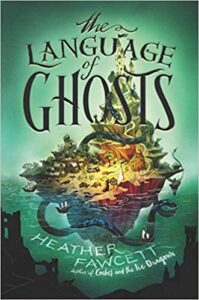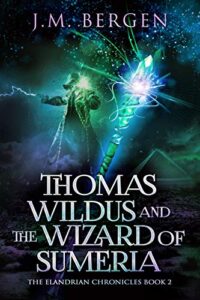

The Poe Estate (The Grimm Legacy, Book 3) by Polly Shulman
Nancy Paulsen Books, 2015
ISBN-13: 978-0399166143
Available: Hardcover, Kindle edition, audiobook, audio CD
This, sadly, is the last book in a trilogy where the real star is not any particular character, but the New-York Circulating Material Repository, a combination library/museum/pocket dimension of fictional objects. The first book, The Grimm Legacy, introduced high school students Elizabeth Rew and Andre Merritt, who were hired to work as pages in the Repository, as they discovered magical objects from fairytales and fantasy. The second book, The Wells Bequest, introduces science geek Leo Novikov and explores fictional objects found in science fiction tales. This third book, The Poe Estate, ventures into the world of Gothic and early horror fiction. It takes place years later, after Elizabeth has become a librarian. She and Andre travel New England looking for haunted objects and houses to store in the repository’s Poe Annex (a detail I loved was that in order to reach the Poe Annex, visitors must first travel through the Lovecraft Corpus, which is just as creepy and atmospherically terrifying as you would expect). However, unlike the first two books, we get a first-person narrator, sixth grader Sukie, whose protective older sister Kitty died from an inherited blood disease from her mother’s side of the family, the Thornes. Kitty haunts Sukie, still compelled to protect her even after death. Sukie and her parents, suffering financially, move into Thorne Mansion, which is in a sad state of disrepair, with their mother’s very elderly cousin, Hepzibah Thorne, and Sukie soon discovers another ghost haunting the house. After meeting Elizabeth and Andre at a flea market, Sukie discovers that the house, and members of her family from generations past, appeared in an unfinished Gothic novel. Sukie, Andre, and Elizabeth go on a treasure hunt, passing through the Lovecraft Corpus, visiting the Spectral Library (a fictional library with a ghostly librarian, containing fictional books that exists inside a story: examples of fictional books include the Necronomicon and The King in Yellow, both of which are better handled by a ghost than a human being), and traveling through the Poe Annex, which contains not just haunted houses, but haunted ships, haunted trains, and haunted islands. There are enough Easter eggs in this book to give any fan of Gothic and early horror fiction plenty to delight in, and the metanarrative is kind of fascinating, although it’s also somewhat confusing.
I personally am absolutely delighted to see the names of some of these lesser-known stories (such as “Afterward” by Edith Wharton and “The Wind in the Rose-Bush” by Mary E. Wilkins Freeman) and authors appear in a middle grade novel, and I love the Repository and its collections. However, Sukie’s story as a girl dealing with grief over the death of her sister, financial difficulties at home, and bullying at school, whose elderly cousin is being pursued by unscrupulous developers, gets shafted by the author’s need to incorporate the Repository into the narrative. Jonathan Rigby, the villain from previous books, doesn’t get much space in the story, and the conflicts and relationships don’t get the attention they deserve. Sukie’s story is definitely a middle-grade story, but its intersection with the Repository storyline mostly derails it in favor of dropping names that might not be familiar even to many adults. Shulman could get away with this in The Grimm Legacy, because most kids have a basic familiarity with fairytales, but I don’t think it works here.
If you are an adult who loves the idea of fantastic libraries or getting to step into favorite stories (visiting the House of Usher, flying on a broom from Young Goodman Brown, tracking down Captain Kidd’s treasure) then this is a really fun book. Unfortunately, I think a lot of it will go over the target audience’s head. Polly Shulman does provide a list of authors and titles mentioned in the text, and she got me interested enough in Hawthorne to look some of his stories up (The Scarlet Letter successfully turned me off to Hawthorne in high school), but I have trouble seeing kids in elementary or early middle school actively seeking these stories out on their own. This isn’t great writing, but it’s a lovely tribute with an enjoyable concept, one of those books that is best shared between an adult who loves the genre and the kids in their lives.







Follow Us!